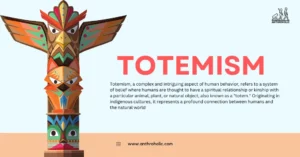AI Answer Evaluation Platform Live Now. Try Free Answer Evaluation Now
Natal
The term “Natal” broadly refers to the circumstances of birth. In the context of biological anthropology, it can touch upon aspects ranging from genetic predispositions influenced by parental genes, to the role of birthplace in human adaptation and survival. Biological anthropologists often use this lens to better understand the complexities of human life, disease, and diversity across time and space [1].

Natal Environment and Genetic Adaptation
Genetic Influence from Parents
Genes transmitted from parents to offspring greatly shape an individual’s physical and behavioral traits. The biological process starts with fertilization, where the paternal and maternal genes combine to create a unique genetic blueprint in the offspring [2].
- Dominant and recessive genes dictate the physical traits of the newborn.
- Polygenic traits like height, skin color, and predisposition to certain diseases also get passed down.
- Genetic adaptations can help offspring survive and thrive in the natal environment.
Epigenetic Modifications
Research indicates that the environment can influence gene expression through a process known as epigenetics [3]. Factors in the natal environment such as stress, diet, toxins, and overall lifestyle can potentially modify gene expression without altering the genetic code itself. These modifications can then be passed on to future generations.
Birthplace and Environmental Adaptation
The natal environment also extends to geographical location or birthplace.
Acclimatization
The concept of acclimatization underlines how individuals respond to environmental changes in their lifetime [4].
- Short-term acclimatization includes physiological responses like sweating or shivering.
- Long-term acclimatization can result in permanent changes like increased lung capacity at high altitudes.
Developmental Acclimatization
More permanent changes due to long-term exposure to certain environments during developmental years, such as increased lung capacity in those born and raised at high altitudes, is referred to as developmental acclimatization [5].
| Factors | Effects |
|---|---|
| High Altitude | Increased lung capacity |
| Extreme Cold | Increased metabolic rate |
| High Ultraviolet Radiation | Increased melanin production |
Cultural Adaptation
Culture, as a part of the natal environment, plays a significant role in human adaptation.
Technological Adaptations
Technological adaptations, such as the use of clothing, housing, and fire, can mitigate environmental stressors [6].
- Clothing and shelter can protect against temperature extremes.
- Fire can be used for cooking, protection, and warmth.
Social Adaptations
Humans are innately social beings, and the community into which a person is born significantly influences their survival and reproductive success.
- Communities provide support systems for food, protection, and learning opportunities.
- Social norms, customs, and laws in the natal environment guide behavior and interpersonal relationships.
Biological Adaptations
Biological adaptations, shaped by the natal environment, can influence physical features, disease resistance, and behavior patterns in human beings.
Physical Features
Human physical traits often reflect adaptations to environmental pressures. For instance, people from tropical regions have evolved darker skin, a trait controlled by melanin, to protect against harmful UV radiation.
Disease Resistance
Natural selection may favor traits that offer resistance to diseases prevalent in the natal environment.
- Malaria resistance in regions with high prevalence has been linked to genetic traits such as the sickle cell trait and thalassemia.
- Certain genetic variations can confer resistance to diseases such as HIV.
Behavioral Patterns
The environment plays a significant role in shaping human behavior.
- In resource-scarce environments, humans may adopt more cooperative behaviors.
- Diverse food availability may influence dietary habits and preferences.
Maternal Factors and Birth
The mother’s health and lifestyle can significantly impact fetal development. Pregnancy complications can also affect the newborn’s health and future development.
Nutrition
Maternal nutrition is essential for healthy fetal development. Nutritional deficiencies can result in low birth weight and developmental issues.
Stress
Chronic maternal stress can affect fetal development and may lead to a higher risk of developmental and behavioral issues in children.
Substance Use
Substance use during pregnancy can have detrimental effects on fetal development. Alcohol, tobacco, and drug use can lead to a range of issues, from developmental disorders to physical abnormalities.
Implications for Anthropological Research
A comprehensive understanding of natal factors and their role in shaping human biology and behavior is crucial for anthropological research. This understanding aids in:
- Reconstruction of historical human populations.
- Understanding human biological and cultural diversity.
- Providing insights into health disparities and disease prevalence.
Conclusion
The natal environment plays a crucial role in shaping human life from the genetic level to the cultural realm. Biological anthropologists are tasked with studying these influences and their consequences, providing a unique perspective on the interconnectedness of life.
References
[1] Larsen, C.S., 2015. Our origins: Discovering physical anthropology. WW Norton & Company.
[2] Ridley, M., 2003. Nature via nurture: Genes, experience, and what makes us human. HarperCollins.
[3] Jablonka, E., & Raz, G. (2009). Transgenerational epigenetic inheritance: Prevalence, mechanisms, and implications for the study of heredity and evolution. Quarterly Review of Biology, 84(2), 131-176.
[4] Beall, C.M., 2006. Andean, Tibetan, and Ethiopian patterns of adaptation to high-altitude hypoxia. Integrative and Comparative Biology, 46(1), 18-24.
[5] Piersma, T., & Van Gils, J.A., 2011. The flexible phenotype: a body-centred integration of ecology, physiology, and behaviour. Oxford University Press.
[6] Hockett, B., & Haws, J. (2003). Nutritional ecology and the human demography of Neandertal extinction. Quaternary International, 105(1), 31-44.




